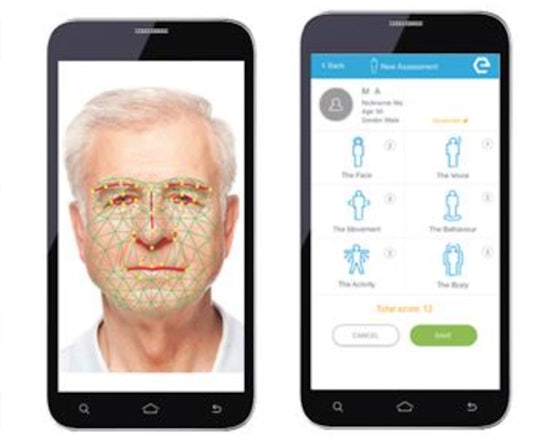New app aims to pinpoint pain in our most vulnerable
It’s National Pain Week – a time to focus on and talk about pain especially in older Australians because pain is not a normal part of ageing – but it is something we can tackle together which should be made easier with the help of a newly approved app.

The ePAT App will calculate pain severity (Source: Shutterstock)
The new ePAT pain assessment app, created by Australian based company ePAT Technologies Limited, has now been cleared for use as a medical device in Australia and is scheduled for release later in the year.
The technology has evolved from research undertaken by Curtin University in Western Australia over the past three years and aims to provide pain assessment for individuals that are unable to communicate verbally with their carers, such as people living with dementia, or those whose speech is affected after a stroke.
Using cameras in smartphones and tablets, the app will capture a brief video of the person, which is analysed in real time using facial recognition software to detect the presence of facial micro-expressions that are indicative of the presence of pain. The data will then be combined with other indicators of pain such as vocalisations, behaviours and movements captured through the ePAT App to calculate a pain severity score.
Set to be rolled out in two stages, the ePAT App for Dementia will first reach people who have lost the ability to communicate with their carers, followed by the ePAT App for Children who have not yet learned to speak.
ePAT Chief Executive Officer (CEO) Philip Daffas says he is delighted that the ePAT App now meets the regulatory requirements of a Class 1 medical device.
“This is a critical milestone in the commercialisation of the ePAT App,” he says.
“We are now in a position to implement our commercialisation plans in the final quarter of 2017 as we had originally planned.”
The Australian Register of Therapeutic Goods (ARTG) registration as a Class 1 medical device and CE (European Conformity) marking is essential for medical device products to be launched in Australia and Europe.
As a Class 1 medical device, Mr Daffas says they ePAT App is differentiated from the multitude of ‘wellness’ apps on the market that typically have not gone through the regulatory process and are not recognised as medical devices.
“Our healthcare professional customers and consumers will look for ARTG inclusions, Therapeutic Goods Administration (TGA) clearance, and CE marking on our app to confirm that the organisation has taken the required steps to confirm the performance and safety of the ePAT App,” Mr Daffas explains.
“Our commercial model will be based on a subscription model that fits with the needs of the enterprise market, i.e the carers in aged care centres, and carers for home use.”
Due to its ease of use and its reproducibility, it is intended that the ePAT App will be able to be used in the first instance to detect and measure a person’s pain, with further measurements to be used to monitor the effectiveness of pain management provided to the person.
The ePAT App is set to be released in Australia in late 2017 and Europe in 2018 via the sale of software to enterprise partners and direct to business, as well as direct to consumers on the App Store and Google Play.
National Pain Week 2017 runs from July 24-30 and is convened by Chronic Pain Australia. If you or anyone you know is suffering from pain of any kind, it is important to seek medical help.























